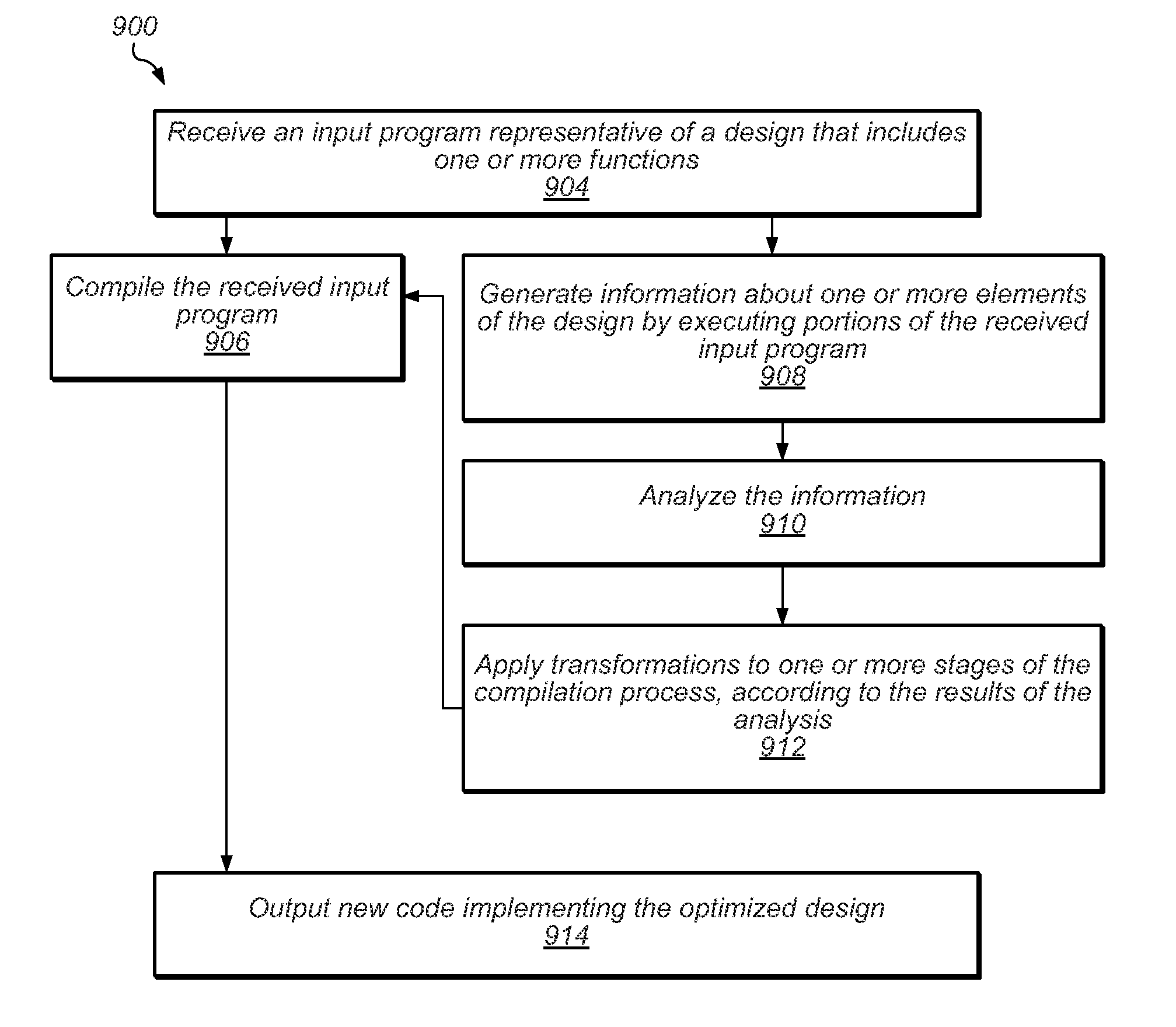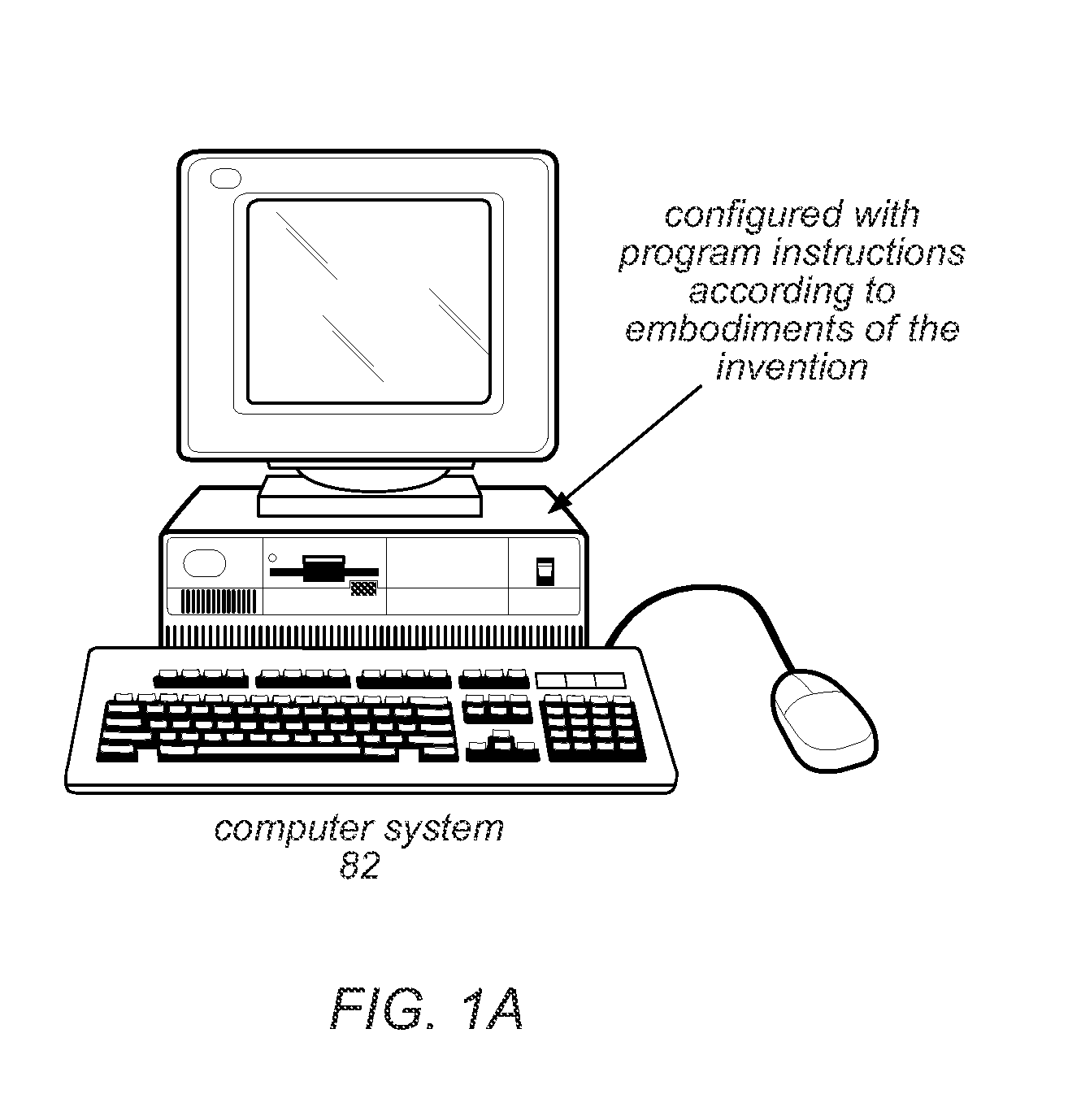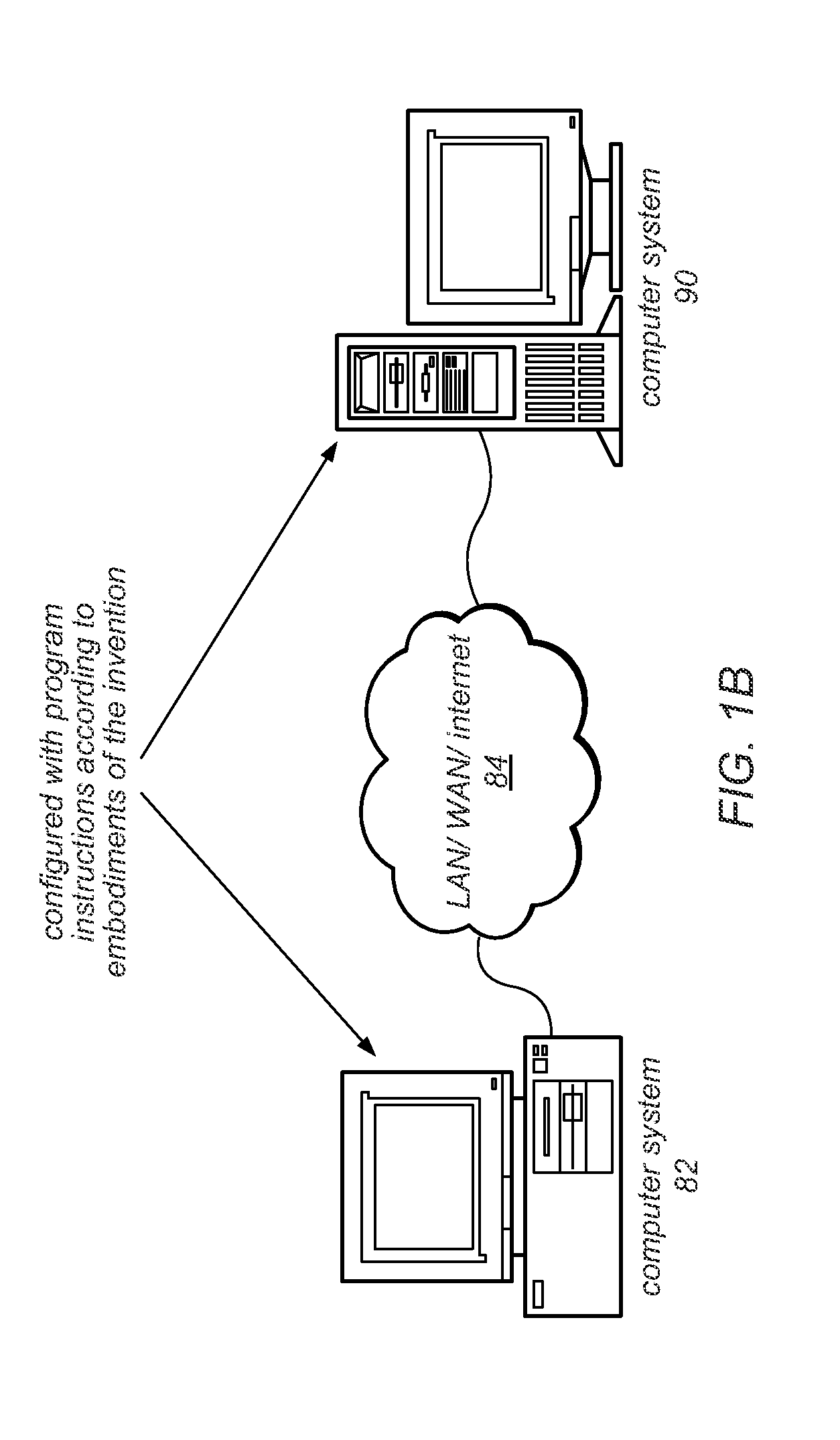Compile Time Execution
a technology of compiler and execution time, applied in the field of programming, can solve the problems of application constraints, application implementation in programmable hardware, and application footprint constraints, and achieve the effects of difficult and/or impossible prediction, and application constraints such as various constraints
- Summary
- Abstract
- Description
- Claims
- Application Information
AI Technical Summary
Benefits of technology
Problems solved by technology
Method used
Image
Examples
first embodiment
[0158]In one set of embodiments, at least two main approaches may be taken to execute portions of a program or graphical program, such as program 800 at compile time. That is, 908 may be implemented according to at least two different embodiments. In a first embodiment, executing a part of the program input includes a synthetic / interpreted execution. According to this embodiment, the graph (e.g. graph 800) may be stepped through dynamically, one node at a time, and it may be determined if all the inputs to the stepped-through node are known. If all the inputs to the stepped-through node are known, type conversion and the proper operation corresponding to the stepped-through node may be dynamically performed. It should be noted that this may be slow to execute, as many decisions are being made about what steps to execute while trying to run the graph subset. However, one positive aspect is that the graph may be executed ‘as is’ without having to remove components that rely on externa...
second embodiment
[0159]908 involves compiling and executing a subset of the graph 800. This approach is more complex than interpreted execution because it includes creating a subset of the computation graph, where the subset does not depend on external data and does not contain constructs like infinite state(s) that can cause values to vary from one run to the next. The subset of the computation graph, or sub-graph may then be provided to the compiler for the host execution system. Assembly instructions may be generated such that as many decisions as possible are made at compile time about what portions of the program to run, instead of making those decisions when trying to execute the sub-graph. This yields very efficient execution code and returns results that are typically orders of magnitude faster than those obtained through the first approach.
[0160]In some cases it may be useful to not only log the raw sequence of values but also to determine during what iteration of a loop, or during which ca...
PUM
 Login to View More
Login to View More Abstract
Description
Claims
Application Information
 Login to View More
Login to View More - R&D
- Intellectual Property
- Life Sciences
- Materials
- Tech Scout
- Unparalleled Data Quality
- Higher Quality Content
- 60% Fewer Hallucinations
Browse by: Latest US Patents, China's latest patents, Technical Efficacy Thesaurus, Application Domain, Technology Topic, Popular Technical Reports.
© 2025 PatSnap. All rights reserved.Legal|Privacy policy|Modern Slavery Act Transparency Statement|Sitemap|About US| Contact US: help@patsnap.com



